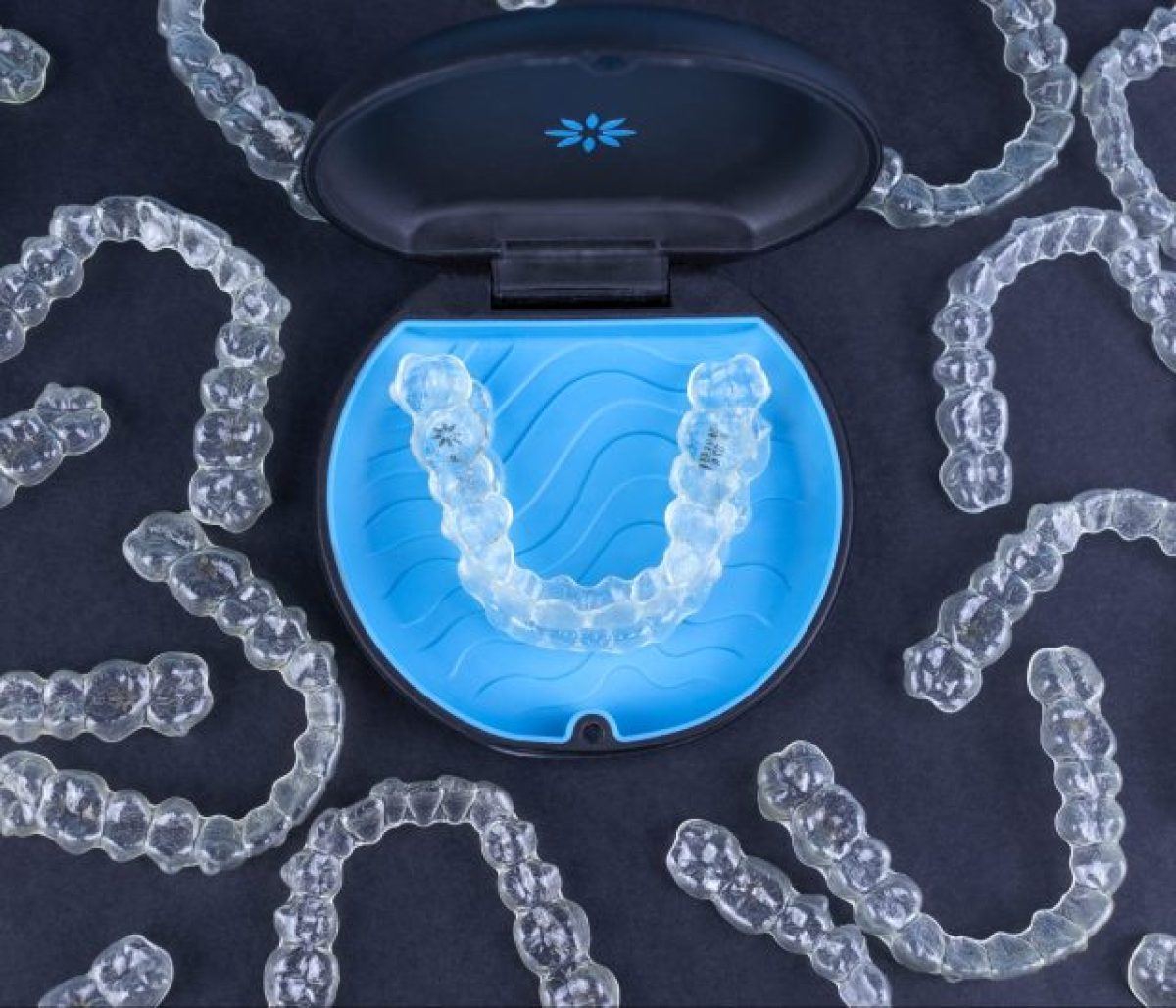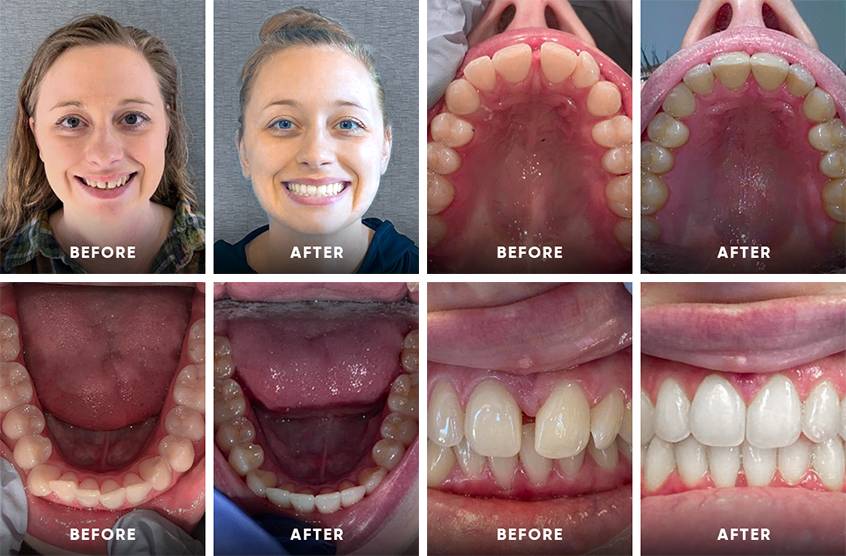Maintaining Oral Health While Using Invisalign: Tips for a Smooth Experience
Invisalign vs. Standard Braces: Which Option Is Right for You?
When thinking about orthodontic treatment, the choice between Invisalign and typical braces provides numerous important elements that warrant cautious examination. Invisalign uses a very discreet option with detachable aligners, while conventional dental braces offer a more noticeable yet effective service for serious misalignment.
Introduction of Treatment Alternatives

In comparison, typical braces include steel brackets and cables that are bound to the teeth. This technique applies continuous stress in time to achieve placement. While reliable for intricate orthodontic issues, traditional braces require routine sees for modifications and can present obstacles in maintaining oral hygiene as a result of the difficulty of cleaning up about cables and brackets.
Both options have their advantages, and the option commonly depends upon particular oral conditions, lifestyle preferences, and patient compliance. Inevitably, speaking with an orthodontic specialist is important for establishing one of the most ideal treatment strategy customized to private needs. Recognizing the nuances of each choice can dramatically influence the general success of orthodontic treatment.
Visual Factors To Consider
A significant element influencing the selection between Invisalign and traditional braces is the aesthetic appeal each treatment uses. Invisalign aligners are crafted from clear plastic, making them basically undetectable when worn. This very discreet appearance is specifically interesting teenagers and grownups that might feel awkward concerning their orthodontic treatment. The ability to maintain a natural smile throughout the alignment process can considerably enhance the person's self-confidence in expert and social settings.
On the other hand, conventional braces consist of metal brackets and cords, which can be a lot more noticeable. While improvements in orthodontic modern technology have actually led to the growth of smaller sized brackets and tinted elastics, conventional braces still preserve an even more noticeable profile. For some individuals, the presence of braces might deter them from seeking required therapy.
Inevitably, the selection between Invisalign and standard dental braces may pivot on individual choices pertaining to aesthetic appeals. Individuals who prioritize discretion often favor Invisalign, while those that are less worried concerning presence may select standard dental braces. Comprehending the visual ramifications of each choice is crucial for making an educated choice that aligns with one's way of living and choices.
Convenience and Convenience

In terms of ease, Invisalign aligners are detachable, making it possible for patients to enjoy their favorite foods without limitation and keep ideal dental hygiene. Cleaning and flossing are streamlined, as the aligners can be gotten throughout these regimens, whereas traditional braces need mindful navigating around cables and brackets.
Furthermore, Invisalign's dynamic system enables less orthodontic brows through. Patients usually obtain multiple sets of aligners at the same time, which can enhance the treatment procedure and reduce time spent in the orthodontist's chair. In contrast, traditional dental braces demand regular changes, making them much less practical Recommended Reading for those with busy schedules. Invisalign. Generally, the comfort and comfort of Invisalign make it an enticing choice for lots of individuals seeking orthodontic therapy.
Therapy Period and Effectiveness
While both Invisalign and typical dental braces work in remedying oral misalignments, the duration of therapy can differ dramatically between the two options. Usually, Invisalign therapy can take anywhere from 12 to 18 months, depending upon the intricacy of the instance. The clear aligners work by slowly changing teeth right into their wanted settings, and normal follow-ups with an orthodontist assistance make sure progression stays on track.
In contrast, standard braces typically need a longer commitment, normally ranging from 18 months to 3 years. This is due to their fixed nature and the navigate here use of cords and brackets, which can be much more effective for complex cases and severe misalignments (Invisalign). The therapy efficiency of typical dental braces is well-documented, as they permit for precise adjustments and better control over tooth motion
Inevitably, the selection in between Invisalign and typical dental braces might depend upon both the expected therapy period and the particular oral concerns available. Consulting with an orthodontist is critical, as they can provide tailored suggestions based on private needs, making sure the chosen approach straightens with desired timeframes and end results.
Price Comparison and Insurance Policy Options
Price plays a substantial role in the decision-making procedure for people thinking about orthodontic therapy, whether going with Invisalign or traditional dental braces. On average, the price of Invisalign arrays from $3,000 to $8,000, while standard braces typically set you back between $2,000 and $6,000. Aspects affecting these prices include the complexity of the instance, the period of therapy, and geographical area.
Several dental insurance policy strategies provide partial coverage for orthodontic therapies, but the specifics can differ extensively. Usually, standard dental braces may be extra often covered by insurance plans contrasted to Invisalign, which some insurance firms classify as a cosmetic procedure.
Additionally, several orthodontic methods offer flexible layaway plan, making both treatment choices more available. Individuals must ask concerning potential funding alternatives and price cuts for upfront settlements. Examining the overall expense, including insurance policy benefits and layaway plan, is essential for making an informed choice that aligns with both visual preferences and budget plan factors to consider.

Conclusion
In recap, the selection between Invisalign and typical braces rests on numerous variables, consisting of aesthetic preferences, comfort, therapy duration, and expense. Invisalign provides a discreet, detachable choice that facilitates oral health and nutritional flexibility, while standard dental braces may be much more suitable for complex oral concerns and commonly come at a reduced rate point. Eventually, assessment with resource an orthodontist is necessary to evaluate specific conditions and establish the most proper therapy option for achieving optimal dental positioning.
When considering orthodontic treatment, the selection between Invisalign and conventional braces offers numerous important factors that merit careful evaluation.Contrasting Invisalign and typical dental braces reveals unique treatment alternatives for orthodontic modification.While both Invisalign and typical dental braces are efficient in dealing with dental imbalances, the duration of treatment can differ considerably between the two options.Expense plays a substantial role in the decision-making process for individuals considering orthodontic therapy, whether opting for Invisalign or conventional braces.In summary, the choice in between Invisalign and standard dental braces hinges on several variables, including aesthetic choices, comfort, therapy duration, and expense.